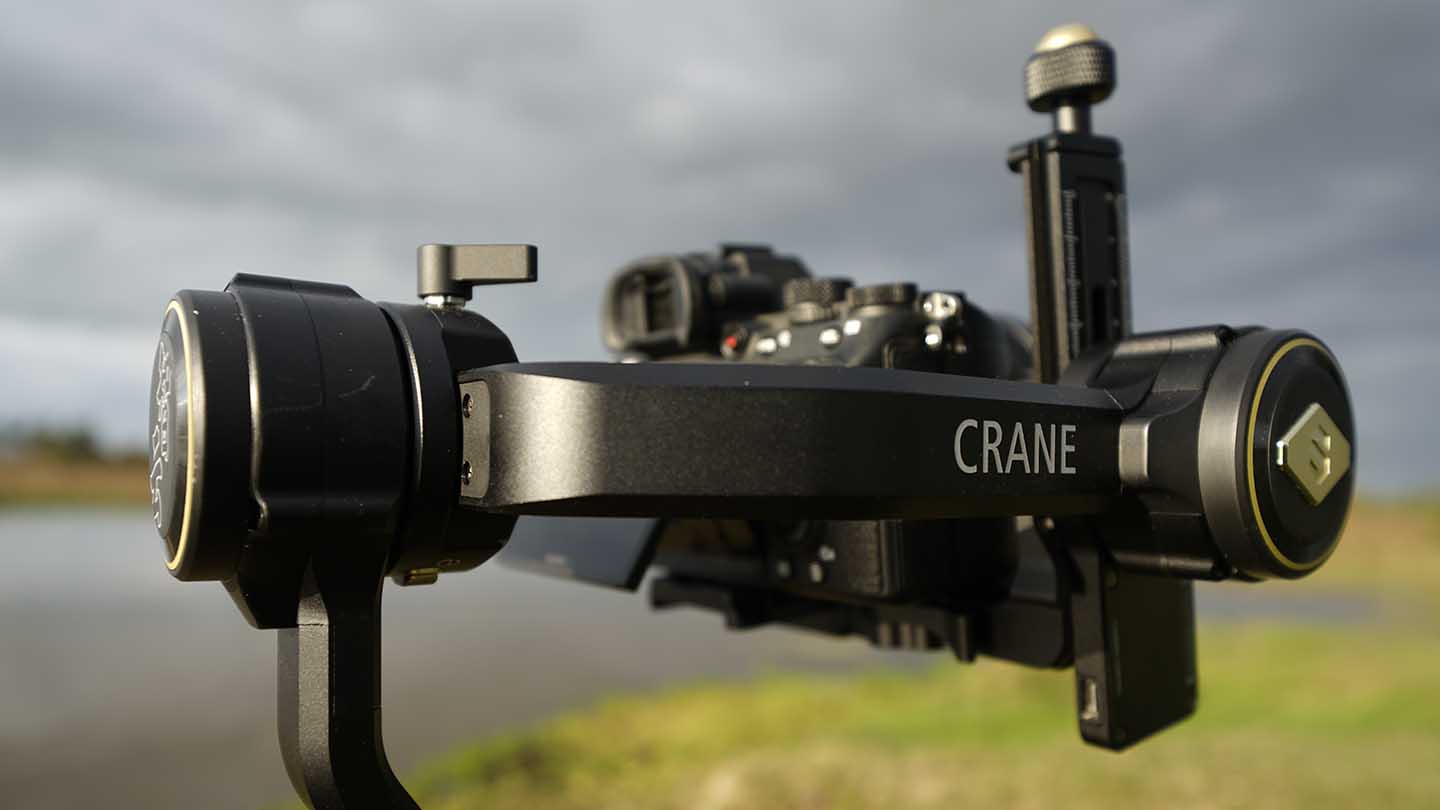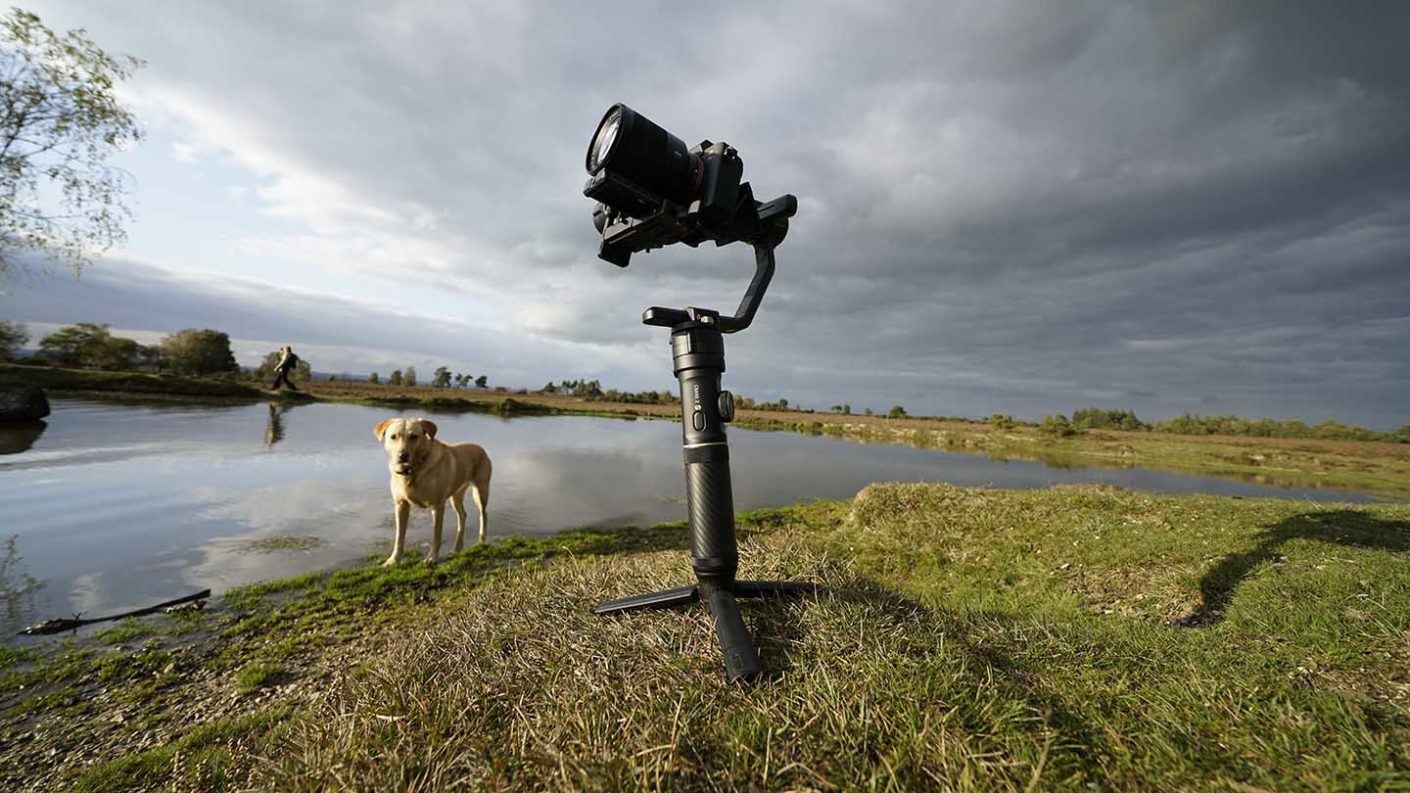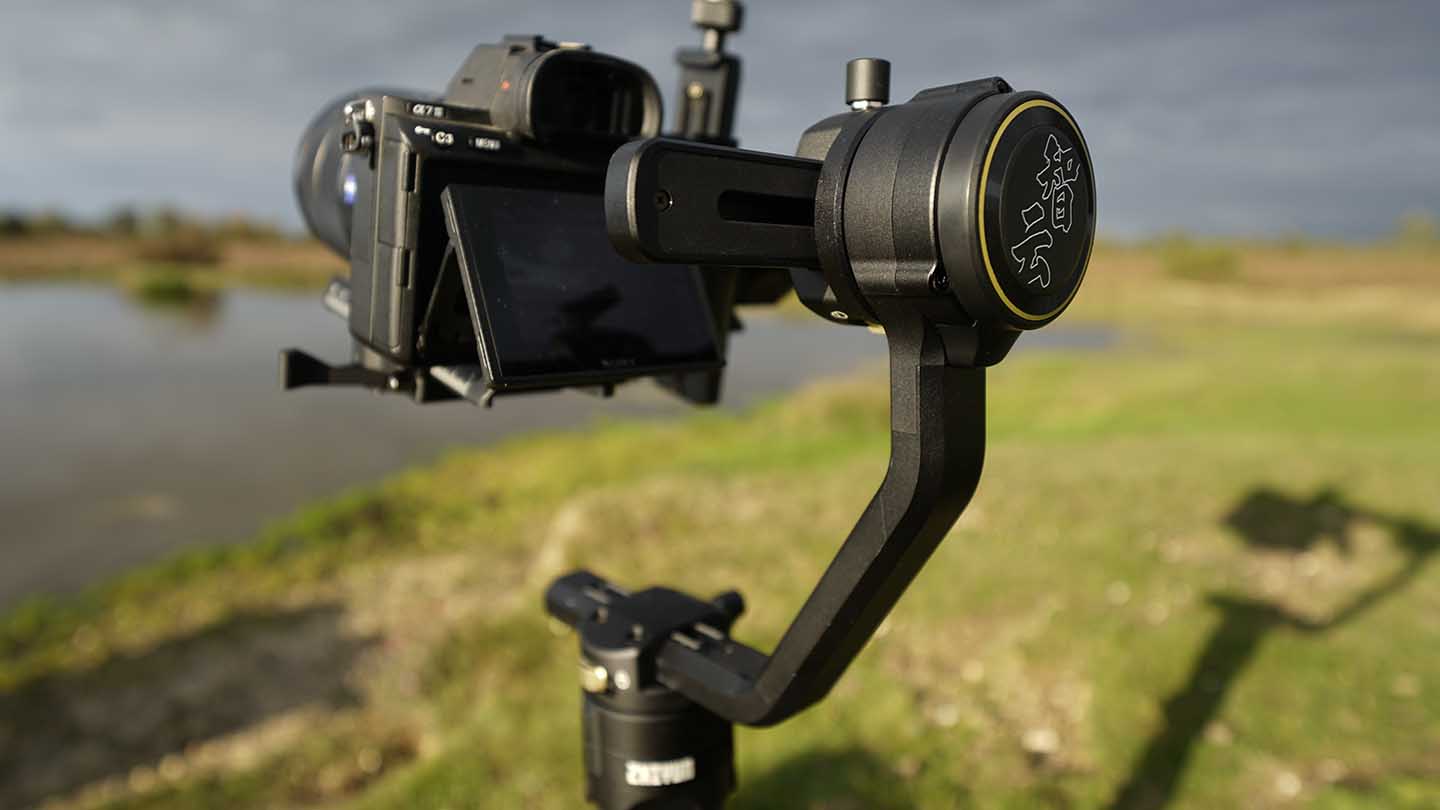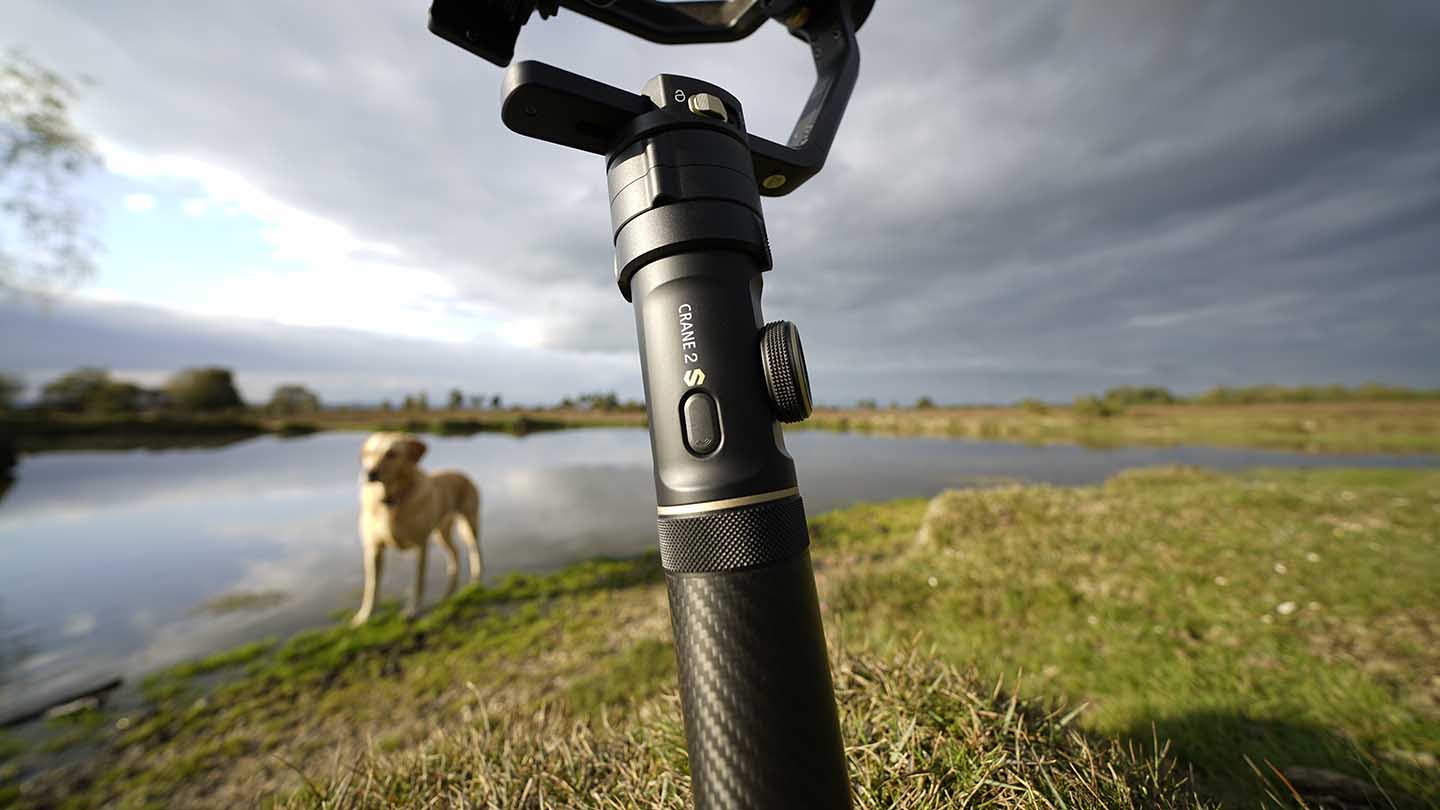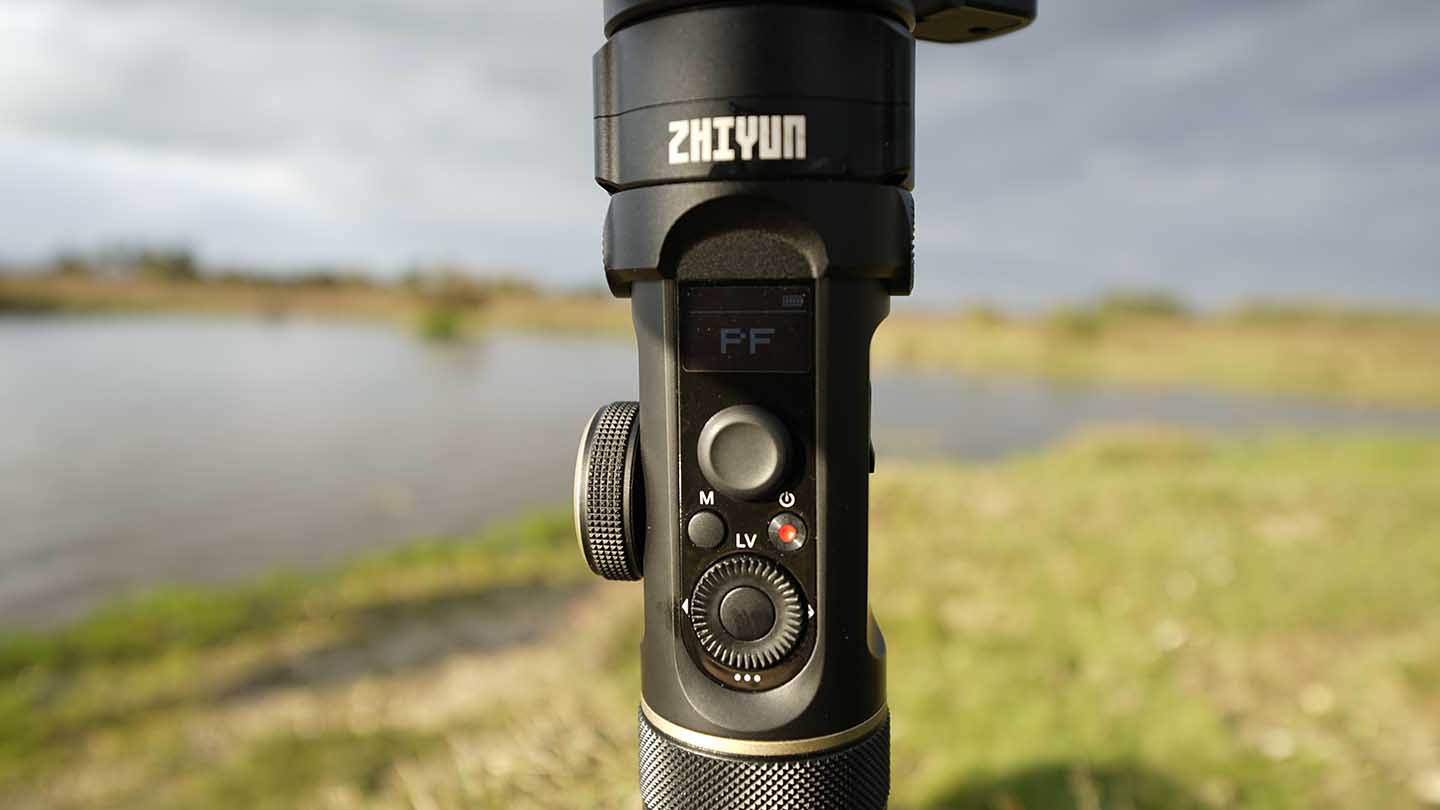Despite the complexity of motorised gimbals, the actual design of these clever devices hasn’t changed a great deal since they first hit the market.
The Crane 2S is all about giving filmmakers a powerful gimbal solution on a decent budget and therefore sticks to basic design principles.
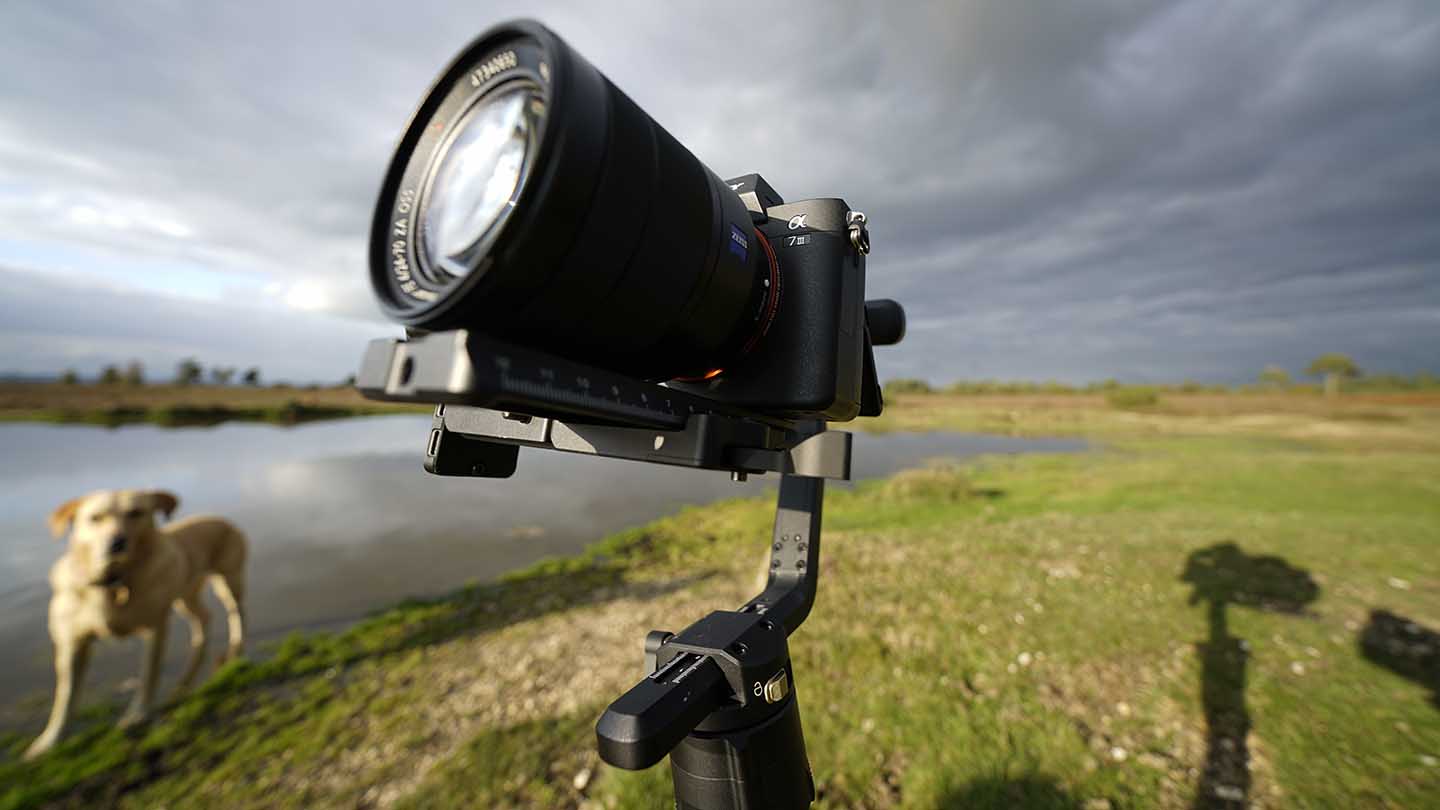
The overall build and quality of construction are excellent; there’s very little to fault. The large grip is an ideal size, although some people may find it a tad too big compared with other models.
The grip is also finished in a smooth carbon finish which looks great but doesn’t offer the same purchase that you get with a good rubber of textured grip.
The biggest issue, however, with the design is that the roll motor covers the rear screen. A few years ago, this was a common issue, but now we’ve come to expect the manufactures to redesign the mechanisms to get around this fundamental issue.
However, there is a saving grace, and that is that ZHIYUN has added two accessory mounts to either side of the grip. Bolt-in a phone holder, and if your camera enables wireless transmission, then you can get a better view of what’s going on that way instead.
Also, if you study the rear arm carefully, you’ll spot that there’s a section that can be removed. This required some care as the cable inside needs to be feed gently into the remaining arm, however, once removed, the motor is lowered and the screen becomes visible.
While the arm blocks the screen by default, it doesn’t make the screen completely unusable; you can still get a good idea of whats going on.
Connections as per usual are wired from the camera to the gimbal to start and stop recording and through Bluetooth to the phone.
Setting up was all straight forward, but you do need to calibrate the gimbal before it springs to life. The process is relatively straight forward, although the instructions on how to do this are not the clearest I’ve come across.
Once the camera is in position and the gimbal is calibrated and switched on, you instantly get to see what all the fuss is about when it comes to motor power.
I’ve either become an expert at balancing motorised gimbals, or this thing has the power to override any inaccuracies.
During the test, this ease of setup became a real winner as often you don’t have the time to mess around balancing a gimbal between each shot. Here it was just a case of popping on the camera, making sure things were roughly balanced, and away you go. Much easier.
Overall the build felt good and solid if a little dated on the fineness of design. The real issue is that rear pan arm that comes up to cover the rear screen.
The handling is also good, although some may find the grip just a touch too large and with no grippy texture it can get slippery after a few hours of use.
